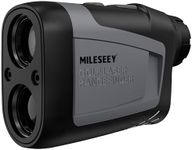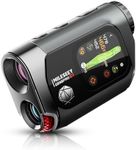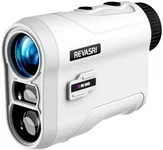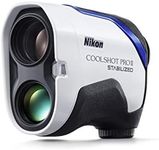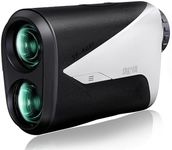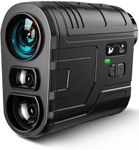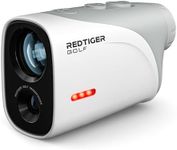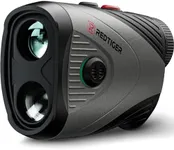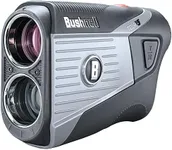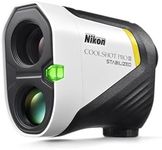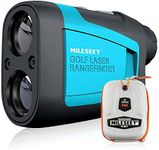Buying Guide for the Best Golf Rangefinder
Choosing the right golf rangefinder can significantly improve your game by providing accurate distance measurements to various points on the course. When selecting a rangefinder, it's important to consider several key specifications to ensure it meets your needs and preferences. Understanding these specs will help you make an informed decision and find the best fit for your golfing style.AccuracyAccuracy refers to how close the rangefinder's distance measurement is to the actual distance. This spec is crucial because precise measurements can help you choose the right club and make better shots. Accuracy is usually measured in yards, with most rangefinders offering accuracy within one yard. For casual golfers, a rangefinder with accuracy within one yard is typically sufficient, while more competitive players might prefer even higher precision.
RangeRange indicates the maximum distance the rangefinder can measure. This is important because it determines how far you can be from your target and still get a reliable reading. Range can vary widely, from a few hundred yards to over a thousand yards. If you often play on large courses or need to measure long distances, opt for a rangefinder with a higher range. For smaller courses or casual play, a lower range may be adequate.
MagnificationMagnification refers to how much closer the rangefinder can make distant objects appear. This is important for clearly seeing your target, especially when it's far away. Rangefinders typically offer magnification levels between 5x and 7x. Higher magnification can be beneficial for spotting distant targets, but it may also make the device harder to stabilize. Choose a magnification level that balances clarity and ease of use based on your needs.
Slope MeasurementSlope measurement accounts for the incline or decline of the terrain, providing adjusted distance readings. This feature is important for making more accurate shots on hilly courses. Some rangefinders offer slope measurement that can be turned on or off, which is useful for tournament play where slope measurement may not be allowed. If you frequently play on courses with varying elevations, a rangefinder with slope measurement can be very helpful.
DisplayThe display shows the distance readings and other information. It's important because a clear, easy-to-read display can make using the rangefinder more convenient. Displays can be LCD or LED, with some offering additional features like brightness adjustment or color options. Consider a display that is easy to read in various lighting conditions and provides the information you need at a glance.
Size and WeightSize and weight refer to the physical dimensions and heft of the rangefinder. This is important for portability and ease of use. Rangefinders come in various sizes and weights, with some being compact and lightweight, while others are larger and heavier. If you prefer a device that's easy to carry and handle, opt for a smaller, lighter rangefinder. However, larger models may offer more features or better durability.
Battery LifeBattery life indicates how long the rangefinder can operate before needing a recharge or battery replacement. This is important for ensuring your rangefinder is ready to use throughout your game. Battery life can vary, with some rangefinders offering several rounds of use on a single charge. Consider how often you play and choose a rangefinder with a battery life that matches your playing habits to avoid interruptions.

